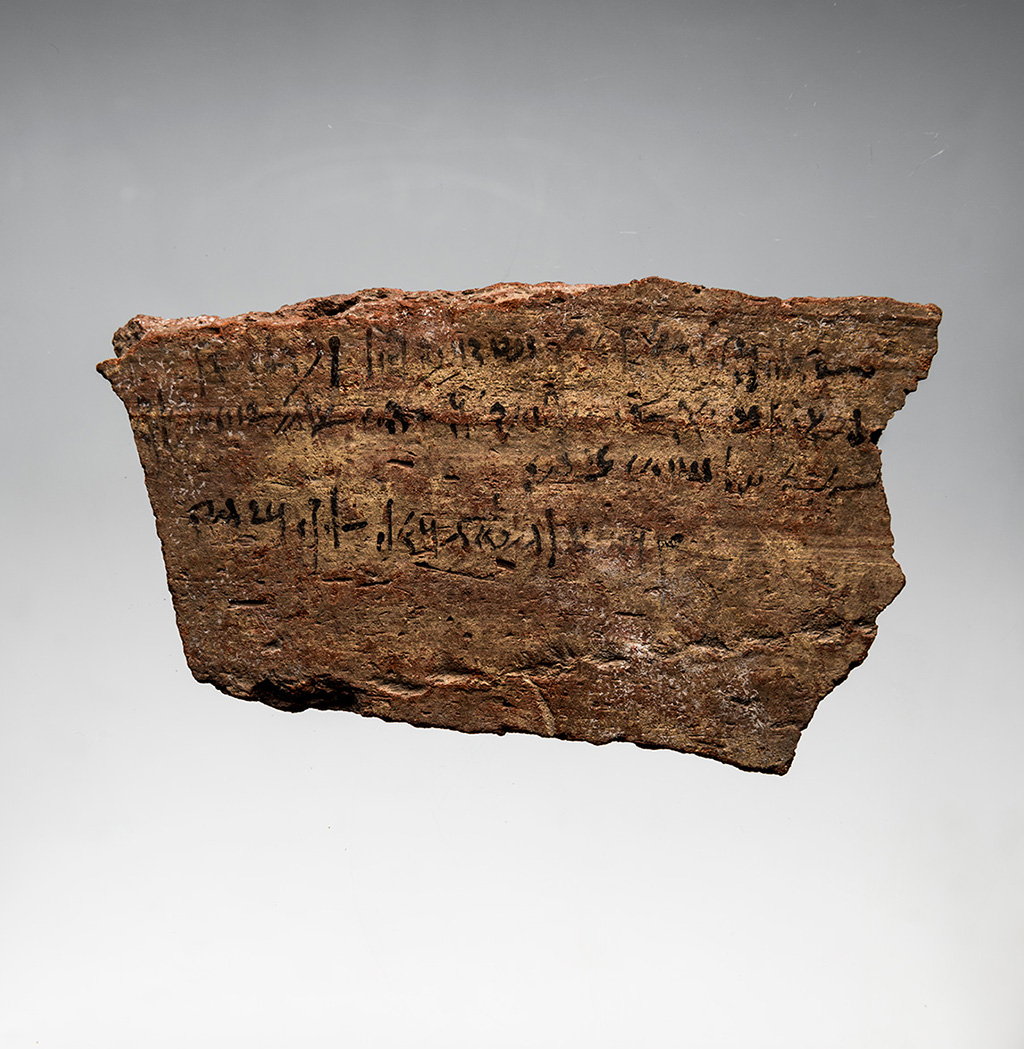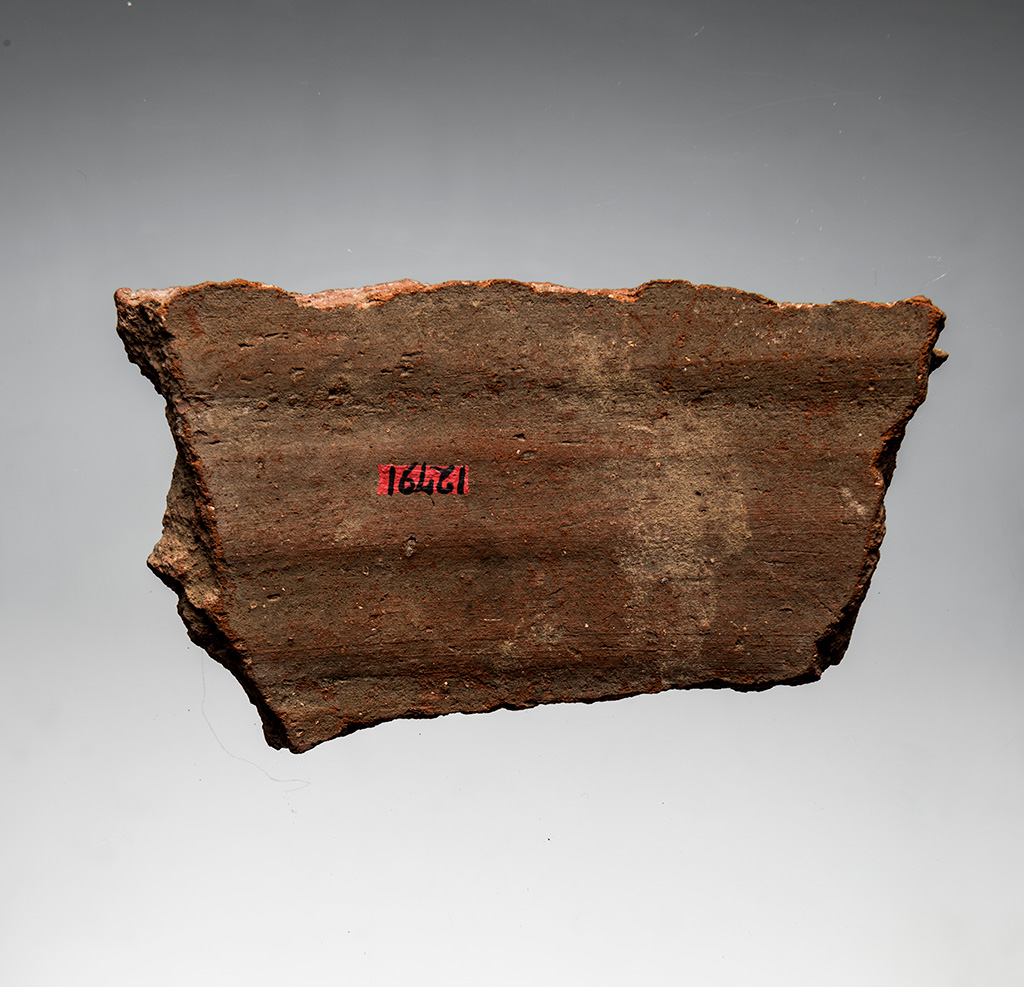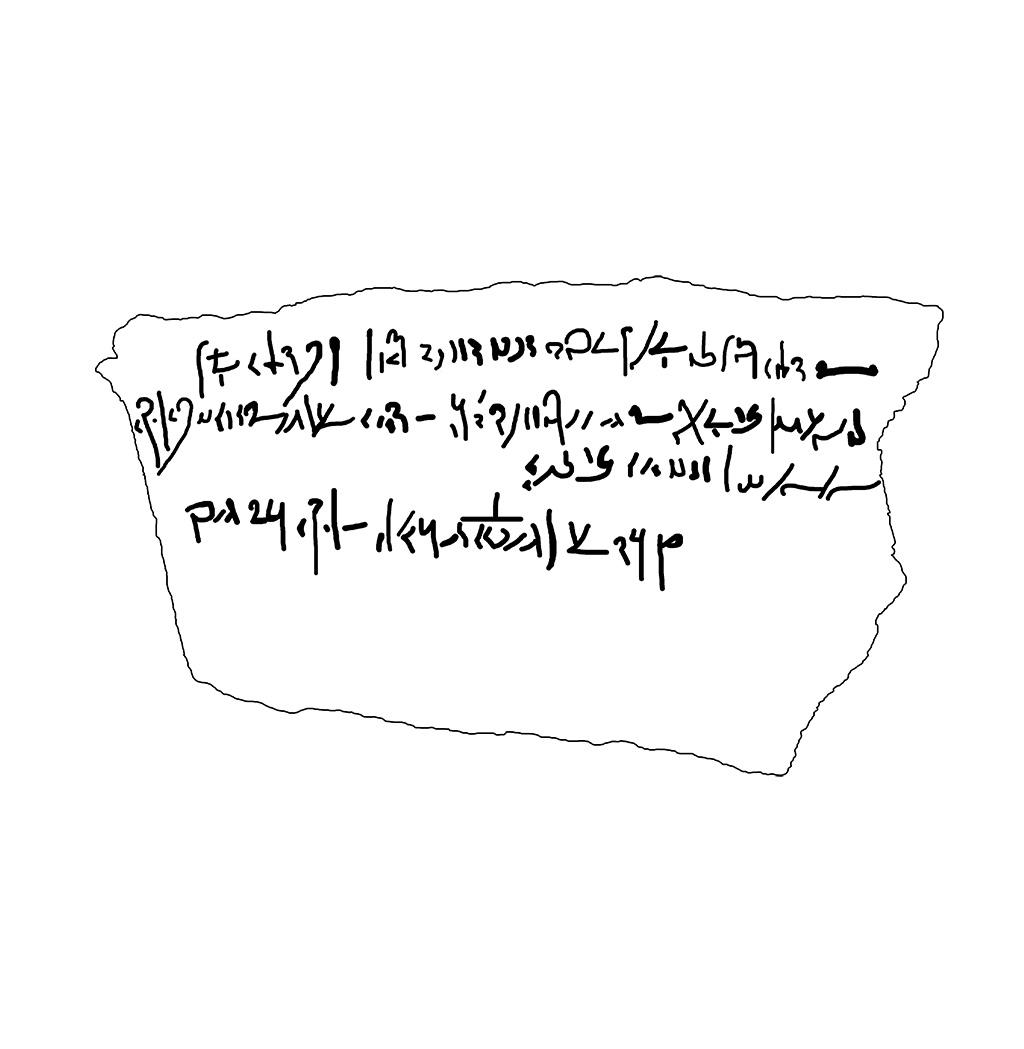Abstract
Sometime between 18 March and 16 April 108 BCE, Senmouthis daughter of Dryton, her sisters, and Senminis daughter of Stotoetis paid the tax on their pigeon house. The Turin demotic ostracon Suppl. 12791 (P. Dryton 54 descr. = TM 44876) is the receipt of the payment drawn up by Patseous son of Pates. The text was already available to the scholarly community in a first translation. The present work provides a transliteration, photos and a facsimile, and a detailed commentary. After an overview of the ostraca from Pathyris (modern Gebelein) in the Museo Egizio and the ostraca in Dryton’s family archive, the content of the text is examined in the light of what we know about the cubit tax on pigeon houses: the demotic and Greek terminology, the amount of the tax and its extra-charge of 20%, the location of the pigeon houses in residential areas, and the advantages of breeding pigeons. The author finally turns to the specific case of pigeon houses of Dryton’s family members and Senminis’ co-ownership.
1. Introduction: demotic ostraca from Pathyris at the Museo Egizio
The Museo Egizio in Turin holds about 400 demotic ostraca, dated to the late Ptolemaic period. They were unearthed at Pathyris (modern Gebelein) in 1910 during the first campaign there of the Italian Archaeological Mission directed by Ernesto Schiaparelli.1 In his “Gebelein 1910” inventory, the demotic ostraca are listed as numbers 12657-12990 in the chapter “Fortezza e santuario”.2
The Turin ostraca did not constitute a homogeneous corpus, but originated from several public and private archival contexts. Thus, presumably not all were found at the site of the Ptolemaic fortress and temple: it is likely that Schiaparelli found some of them in the residential area of Pathyris – which between the 2nd and 1st century BCE extended from the valley between the two hills of Gebelein to the top of the
The Turin demotic ostraca from Pathyris mainly consist of court oaths, letters, lists, accounts, contracts,
The ostracon is well preserved, there being no breaks or lacunas in the text, although here and there the ink is discoloured. The first line lists the names of the taxpayers, while the last line records the name of the banker and the date of payment: Year 9 of king Ptolemy IX (108 BCE), during Phamenoth, the third month of the spring season (18 March – 16 April) – in Pathyris, pigeon house taxes were usually paid between March and May.6
2. An ostracon from Dryton’s family archive (TM Arch id: 74)
Vandorpe identified 8 Greek and demotic ostraca as belonging to the private family archive of Dryton son of Pamphilos, and precisely to its third period (126-91 BCE).7 After the death of the archive owner Dryton (presumably shortly after 126 BCE, the year of his third and last will), his eldest son Esthladas inherited a (now lost) part of the archive, whereas his daughter Senmouthis and her husband Kaies son of Pates inherited its currently surviving part and added to it significantly. The ostraca were found in the same place as Dryton family’s papyrus archive8 and are currently in Cairo (P. Dryton 52, 55, 58), Zürich (P. Dryton 51, 53, 56, 57) and Turin (Suppl. 12791, published here).
Four receipts of the pigeon house tax are preserved from Dryton’s family archive, written on ostraca in demotic and Greek.
- – TM 44876 = P. Dryton 54 = Turin, O. dem. 12791: March–April 108 BCE
- – TM 44877 = P. Dryton 55 = Cairo, O. dem. inv .no. JE 51448: 15 March 101 BCE
- – TM 44878 = P. Dryton 56 = Zürich, O. Gr. inv .no. 1904: 14 May 100 BCE
- – TM 44879 = P. Dryton 57 = Zürich, O. Gr. inv .no. 1905: 30 May 100 BCE
3. The text
First edition (with translation): Vandorpe, The Bilingual Family Archive of Dryton, 2002, p. 402, no. 54 (descr.).
References: Kaplony-Heckel, Enchoria 19/20 (1992/3), p. 46, no. 11; Vandorpe and Waebens, Reconstructing Pathyris’ Archives, 2009, §36.
Photo and facsimile: Fig. 1, 2
TM 44876 (= Turin O. dem. Suppl. 12791). Photo by Nicola Dell’Aquila and Federico Taverni/Museo Egizio.
TM 44876 (= Turin O. dem. Suppl. 12791). Photo by Nicola Dell’Aquila and Federico Taverni/Museo Egizio.
Facsimile of TM 44876. Digital drawing by M. Pascalicchio.
- (1) Senmouthis daughter of Dryton, and her sisters, together with Senminis
- (2) daughter of Stotoetis, have paid for the tax of their pigeon house of Year 9
- (3) 1 talent and their extra-charge.
- (4) Written by Patseous son of Pates, in Year 9 Phamenoth.
4. The cubit tax on pigeon houses
16 receipts of the pigeon house tax have been preserved, all originating from the Perithebas and the Pathyrite region, written in demotic or Greek between 112–48 BCE.11 In the demotic formulation, the tax is called:
Interestingly, in the demotic tax name only the singular “pigeon house” is attested,14 in contrast to the Greek formulation where the indefinite plural “pigeon
An uncommon variant of the word “tax” is here attested:
The name of the tax is followed by the fiscal year (
The total amount of the pigeon-house tax paid by the six taxpayers in 108 BCE was 6000 dr., and 1200 dr. its extra-charge: each taxpayer therefore paid 1200 dr. (1000+200 dr.). A comparison with the other preserved receipts for the pigeon house tax in Dryton’s family archive shows that the tax amount and extra-charge remained unchanged from 108 to 100 BCE:
- – TM 44876 (108 BCE): each taxpayer paid 1200 dr. (1000 dr. as tax amount and 200 dr. as extra-charge);
- – TM 44877 (101 BCE): Senmouthis paid 60 deben (1200 dr.), including the extra-charge, i.e., 1000 dr. and 200 dr.;
- – TM 44878 (100 BCE): Semnouthis paid the same sum;
- – TM 44879 (100 BCE): three taxpayers (Senmouthis among them) paid 1000 dr. each: the total of 3600 dr. includes 200 dr. as extra-charge paid by each of them.
The fact that the tax amount had not changed in almost a decade confirms that the object of the taxation was not the income from breeding or selling pigeons
5. The pigeon houses of Dryton’s family members
As explained, the demotic denomination of the tax does not distinguish between the singular, “pigeon house”, and the plural: therefore, based on the demotic terminology, there is no indication of how many pigeon houses taxpayers paid the cubit tax on. Individual taxpayers may well have owned several dovecotes each, but the cubit tax receipts do not distinguish the tax burden on each of them, but merely record the total amount. Thus, the tax receipt under consideration may have been for several pigeon houses, which may explain why the amount is so high.
In the last will of 126 BCE mentioned above, Dryton bequeathed to his eldest son Esthladas two pigeon houses, one of which was half finished, and to his five daughters a building plot close to their house. The sisters were to build another pigeon house there and share the building costs and taxes. Esthladas would financially support them, if necessary.
This seems to have already happened before 108 BCE, since in the Turin ostracon under study the pigeon houses had already been built and their ownership had been divided among the sisters and a woman from outside the family, Senminis daughter of Stotoetis. How Senminis came into possession of a portion of the pigeon houses of Dryton’s family members cannot be deduced from any preserved document from Pathyris. It is notable, however, that the name of Senminis does not appear again in the receipts for the pigeon-house cubit tax of the following years, which were issued only to Senmouthis for the payment of her tax share. Perhaps other receipts were issued to the other taxpayers listed in TM 44876, but no trace of them has been preserved.
In conclusion, Dryton’s family members owned three pigeon houses, located near their house in the residential area of Pathyris. They were of modest size and used for private, small-scale pigeon breeding for fertilising vineyards and gardens. This information could be useful in meeting a major desideratum: locating Dryton’s family members’ urban property. The Museo Egizio holds 14 unpublished maps of Pathyris drawn by Virginio Rosa, as instructed by Schiaparelli, during the second campaign of the Italian Archaeological Mission at Gebelein in 1911. The drawings show the regularity of the cubit-based urban plan and include houses, streets and specific buildings, such as ovens and pigeon houses.26 These maps will soon be scanned and released in a digital, open-access version.27 The author’s forthcoming PhD project28 will provide an opportunity to study the maps to seek to identify in them the house of Dryton’s family members in the residential area of Pathyris.
Bibliography
Bergamini, G., “La ‘riscoperta’ di Pathyris: risultati e prospettive di ricerca”, in N. Bonacasa, A.M. Donadoni Roveri, S. Aiosa, and P. Minà (eds.), Faraoni come dei, Tolemei come faraoni: atti del V Congresso Internazionale Italo-Egiziano, Torino, Archivio di Stato, 8 – 12 dicembre 2001, Torino-Palermo 2003, pp. 213–21.
Kaplony-Heckel, U., “Ostraca di Gebelein”, in A.M. Donadoni Roveri (ed.), Dal museo al museo. Passato e futuro del Museo Egizio di Torino, Torino 1989, pp. 134–36.
Kaplony-Heckel, U., “Pathyris, Demotische Kurz-Texte in Cairo”, Enchoria 19/20 (1992/3), pp. 45–86.
Kenyon, F.G. and H.I. Bell, Greek Papyri in the British Museum: Catalogue, with Texts, III, London 1907.
Maresch, K., Bronze und Silber. Papyrologische Beiträge zur Geschichte der Währung im ptolemäischen und römischen Ägypten bis zum 2. Jahrhundert n. Chr. (Papyrologica Coloniensia 25), Opladen 1996.
Milne, J.G., “Double Entries in Ptolemaic Tax-Receipts”, JEA 11 (1925), pp. 269–83.
Mitteis, L. and U. Wilcken, Grundzüge und Chrestomathie der Papyruskunde, Leipzig-Berlin 1912.
Pascalicchio, M., “New Light from Turin: Reconstructing the Business Archive of the Temple of Hathor from Ptolemaic Pathyris”, in Enchoria 38 (2024), forthcoming.
Pestman, P.W., “L’impôt-ἐγϰύϰλιον à Pathyris et à Krokodilopolis”, in P.W. Pestman and E. Boswinkel (eds.), Textes grecs, démotiques et bilingues (Papyrologica Lugduno-Batava 19), Leiden 1978, pp. 214–22.
von Reden, S., Money in Ptolemaic Egypt: From the Macedonian Conquest to the End of the Third Century BC, Cambridge 2007.
Spiegelberg, W., “Demotische Kaufpfandverträge (Darlehen auf Hypothek)”, RecTrav, 31 (1909), pp. 91–106.
Vandorpe, K., “The Ptolemaic Epigraphe or Harvest Tax (shemu)”, in Archiv für Papyrusforschung und verwandte Gebiete 46 (2000), pp. 165–228.
Vandorpe, K., The Bilingual Family Archive of Dryton, His Wife Apollonia and Their Daughter Senmouthis (P. Dryton), Brussel 2002.
Vandorpe, K. and L. Vannopré, “Private and Commercial Pigeon Breeding Taxed. Ptolemaic Levies on Pigeon Houses and their Revenues”, Ancient Society 50 (2020), pp. 41–64.
Vandorpe, K. and S. Waebens, Reconstructing Pathyris’ Archives: A Multicultural Community in Hellenistic Egypt, Brussel 2009.
Online sources
Archivio di Stato di Torino, Sovrintendenza Speciale al Museo delle Antichità Egizie di Torino https://archiviodistatotorino.beniculturali.it/naviga-patrimonio/progetti/archivio-museo-egizio-torino/, 2019–.
The Chicago Demotic Dictionary (CDD), https://oi.uchicago.edu/research/publications/demotic-dictionary-oriental-institute-university-chicago, 2001–2012.
Trismegistos: An Interdisciplinary Portal of the Ancient World, https://www.trismegistos.org/, 2011–.
Notes
- The present contribution is my first publication. I am applying for a PhD fundamental fellowship at the FWO (Research Foundation – Flanders). My project proposal is to reconstruct the business archive kept by the priesthood of Hathor in Pathyris between 165-88 BCE through a study of unpublished material held in the Museo Egizio of Turin and the reassessment of published fragments. More details will be available in Pascalicchio, <i>Enchoria</i> 38 (2024, forthcoming). Katelijn Vandorpe (KU Leuven) and Mark Depauw (KU Leuven) are the supervisors of the project, and Susanne Töpfer (Museo Egizio, Turin) is the external co-supervisor. I would like to thank her for providing me with the scans of the ostracon under study, and for her helpfulness and support. My gratitude also goes out to Katelijn Vandorpe for her valuable feedback, which improved this paper, and the anonymous reviewers for their suggestions and comments. Trismegistos ID numbers are given for the cited documents, archives, and people; direct links will be provided only for their first mention in the article.↑
- Available on the website of the Archivio di Stato di Torino, Sovrintendenza Speciale al Museo delle Antichità Egizie di Torino -> Secondo versamento -> Antichità Egizie -> Inventari, Mazzo 2, Fascicolo 17: <a href="https://archiviodistatotorino.beniculturali.it/dbadd/egizio_n.php?id=3329&v=2&m=2&f=17">https://archiviodistatotorino.beniculturali.it/dbadd/egizio_n.php?id=3329&v=2&m=2&f=17</a>↑
- Vandorpe and Waebens, <i>Reconstructing Pathyris’ Archives</i>, 2009, p. 20. ↑
- For an overview, see Kaplony-Heckel, in Donadoni Roveri (ed.), <i>Dal museo al museo</i>, 1989, pp. 134–36. For the interpretation of the <named-content content-type="traslitterazione">r-rx=w</named-content> receipts see Vandorpe, <i>Archiv für Papyrusforschung</i> 46 (2000), pp. 165–228.↑
- For the identification of the banker, see Vandorpe, <i>The Bilingual Family Archive of Dryton,</i>, 2002, pp. 396–98. ↑
- See the chapter “Survey: the pigeon house tax in Pathyris” in Vandorpe, op. cit., p. 395.↑
- Vandorpe, op. cit., pp. 391–406. For the identification of the periods into which Dryton’s archive can be divided, see Vandorpe, <i>op. cit.</i>, pp. 13–16.↑
- Vandorpe, <i>op. cit.</i>, p. 391.↑
- The last two signs are very faded: only the upper part of the consonant <i>n</i> is preserved, and the determinative is not clear to me (perhaps the determinative for the stranger without the vertical stroke?).↑
- The feminine personal pronoun is normally written differently.↑
- See the survey in Vandorpe and Vannopré, <i>Ancient Society</i> 50 (2020), pp. 60–62.↑
- TM 51151 (Kaplony-Heckel, <i>Enchoria</i> 19/20 [1992/3], p. 57 no. 7); TM 44877 (P. Dryton 55).↑
- TM 51150 (Kaplony-Heckel, <i>Enchoria</i> 19/20 [1992/3], p. 57 no. 6).↑
- Vandorpe and Vannopré, <i>Ancient Society</i> 50 (2020), p. 51 no. 72.↑
- TM 5925 (O. Leiden Gr. 12); TM 43625 (O. Bodl. I 90); TM 97329–97330 (SB XXVI 16713-16714); TM 5607 (SB I 1091).↑
- <i>CDD</i> sv t, 233. ↑
- TM 86 (London, British Library Pap. 881): the Greek contract is preserved in its entirety (Kenyon and Bell, <i>P. Lond.</i> 3, pp. 11–12 no. 881; Mitteis, <i>Chrest. Mitt.</i>, 153), as is the demotic receipt (Spiegelberg, <i>RecTrav</i> 31 (1909), p. 102; Pestman, P. L. Bat. 19, p. 220). ↑
- Pestman, in Pestman and Boswinkel (eds.), <i>Textes grecs, démotiques et bilingues</i>, 1978, p. 221 c.↑
- The identification of Patseus as the scribe of two measurement receipts, fourteen harvest tax receipts and the <i>komogrammateus</i> between from 93 to 91 BC (suggested in Vandorpe, <i>The Bilingual Family Archive of Dryton</i>, 2002, p. 398) lies outside the scope of this work.↑
- Maresch, <i>Bronze und Silber</i>, 1996, pp. 210–13; Von Reden, <i>Money</i>, 2007, pp. 112–17; Vandorpe and Vannopré, <i>Ancient Society</i> 50 (2020), p. 53.↑
- According to Milne, <i>JEA</i> 11 (1925), p. 282, the extra-charge could cover the costs of the collection and conversion of copper into silver, in the case of taxes assessed in silver, and vice versa.↑
- Vandorpe and Vannopré, <i>Ancient Society</i> 50 (2020), pp. 48–51, and Appendix 1, pp. 55–59.↑
- Vandorpe and Vannopré, <i>Ancient Society</i> 50 (2020), pp. 52.↑
- TM 258 (P. Dryton 4) and TM 284 (P. Dryton 34).↑
- Vandorpe and Vannopré, <i>Ancient Society</i> 50 (2020), pp. 51–54.↑
- Vandorpe and Waebens, <i>Reconstructing Pathyris’</i> Archives, 2009, p. 18. See in detail Bergamini, in Bonacasa and Donadoni Roveri (eds.), <i>Faraoni come dei</i>, 2003, p. 217, and figs. 5-6, 9. ↑
- For this information I am sincerely grateful to Beppe Moiso, curator of the Museo Egizio’s paper and photographic archives.↑
- Pascalicchio, <i>Enchoria</i> 38 (2024), forthcoming. See <i>supra</i>, note 1.↑










